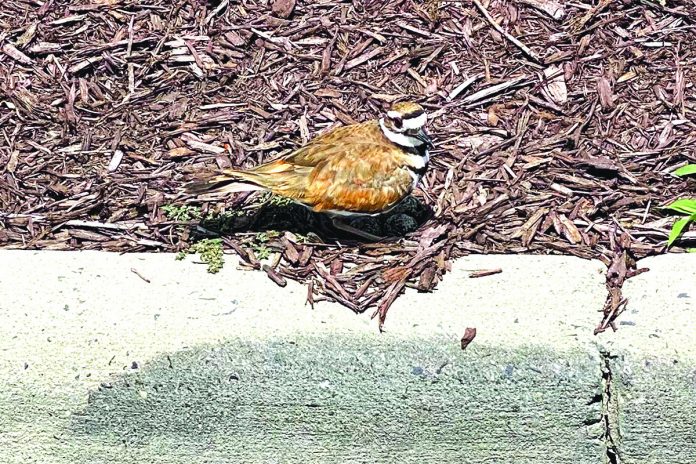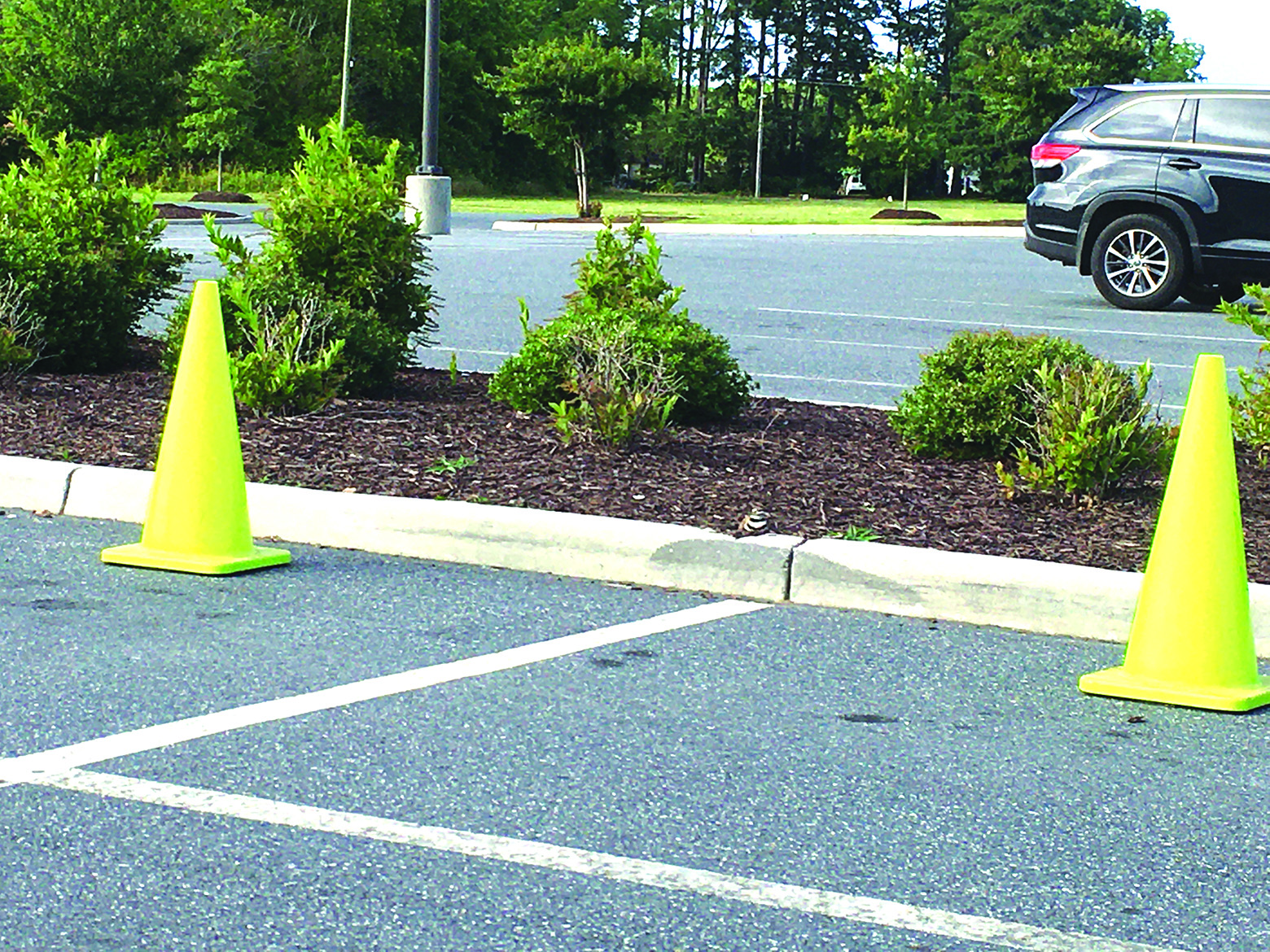
By Carol Vaughn —
Quick thinking on the part of local birders and Riverside Shore Memorial Hospital staff helped protect a killdeer who has built her nest in the hospital parking lot.
Deb Torguson was scheduled for a test at RSMH the afternoon of June 25. When she pulled into a parking spot close to the grassy median, she immediately noticed the small bird “panicking and squawking at me,” she said, adding, “I hadn’t noticed the nest right away as I was in awe of how beautiful she looked and I grabbed my Iphone to take a few photos.”
When Torguson exited her vehicle, the bird’s cries grew louder “and then I realized why, as the nest was right there next to the curb,” she said.
Realizing the nest could be in harm’s way, “especially the way people drive over curbs,” Torguson contacted Eastern Shore Bird Club President Tony Picardi, asking if the club could request the hospital to temporarily block off parking spots close to the nesting killdeer.
Picardi immediately contacted hospital staff, telling that the killdeer ran the risk of being hit and killed as she would try to lead people away from the nest, according to an email he sent Torguson.
“Yes, we have a killdeer sitting on a nest of three eggs…just in front of the hospital canopy,” RSMH spokesperson Sally Schreiber said in an email. She said the mother bird is well-camouflaged in the dappled sunlight.
Picardi contacted the hospital around 4 p.m. and by the time he drove to Riverside to check on the situation, arriving just before 6 p.m., he saw two yellow cones had been placed in the parking spaces close to the nest.
He found the killdeer “nesting serenely on her eggs,” he wrote.

People can help the species prosper by letting the mother bird nest in peace and staying away from the nesting area.
Killdeer are shorebirds with long wings and tail. Their habitat typically is on open ground with low or no vegetation, including golf courses, driveways, parking lots, and gravel-covered roofs, as well as pastures, fields, sandbars, and mudflats, according to the Cornell Lab of Ornithology. They make shallow nests on the ground.
Killdeer get their name from the sound of their noisy call.
Adult killdeer are known to call loudly, bob, and run away to try to distract predators from their nests. They also perform broken-wing displays to distract predators.
A killdeer’s clutch numbers four to six eggs on average, with an average incubation period of 25 days, according to the website nestwatch.org
Killdeer populations in North America declined by about 47% between 1966 and 2014, with greater declines in Canada and the American West, according to the North American Breeding Bird Survey. A 2012 study estimated around there were around 2 million breeding killdeer in North America, an increase over numbers reported in 2006.
The average lifespan of a killdeer is three to five years, but some have been recorded living as long as 10 years.


